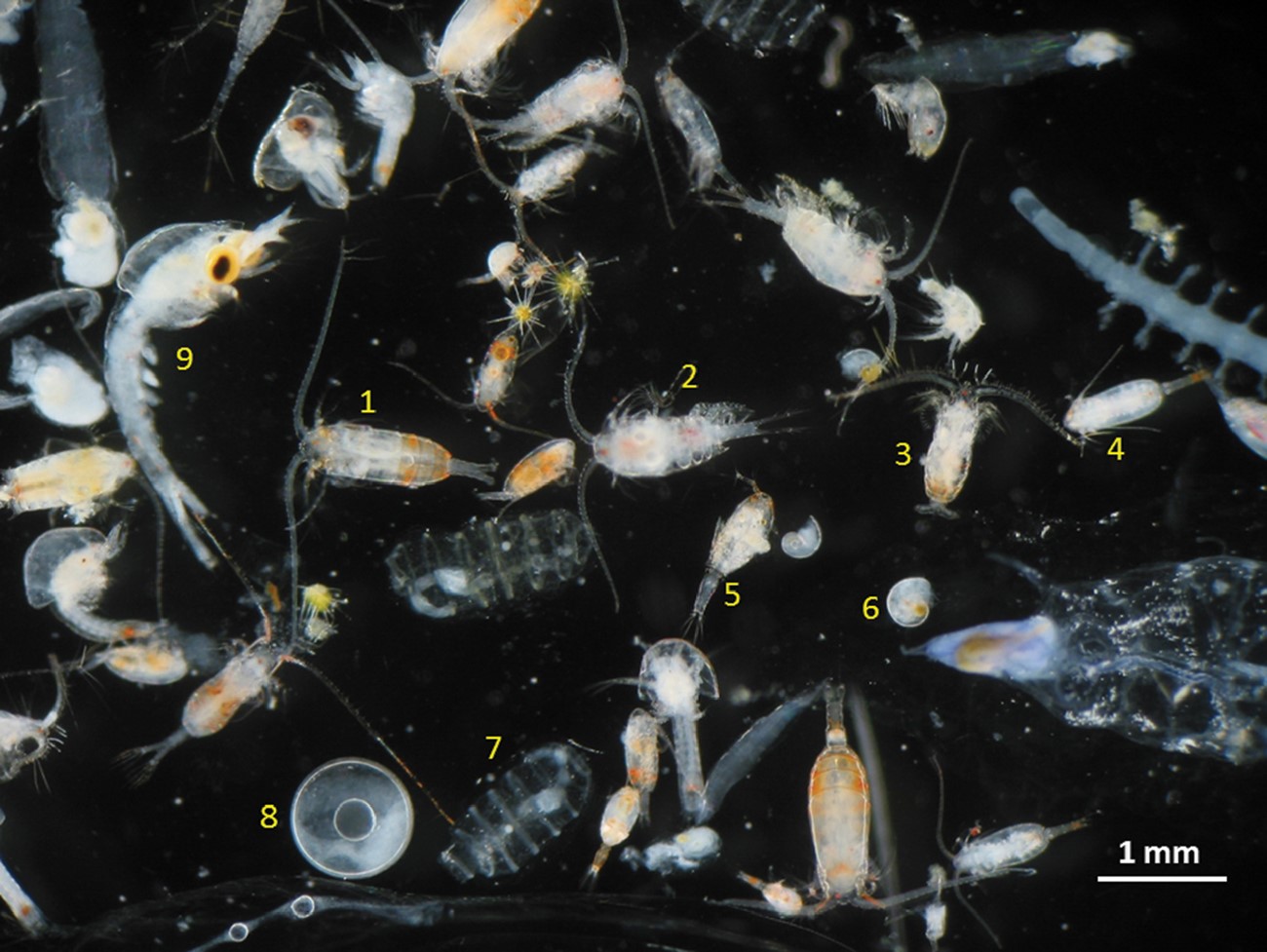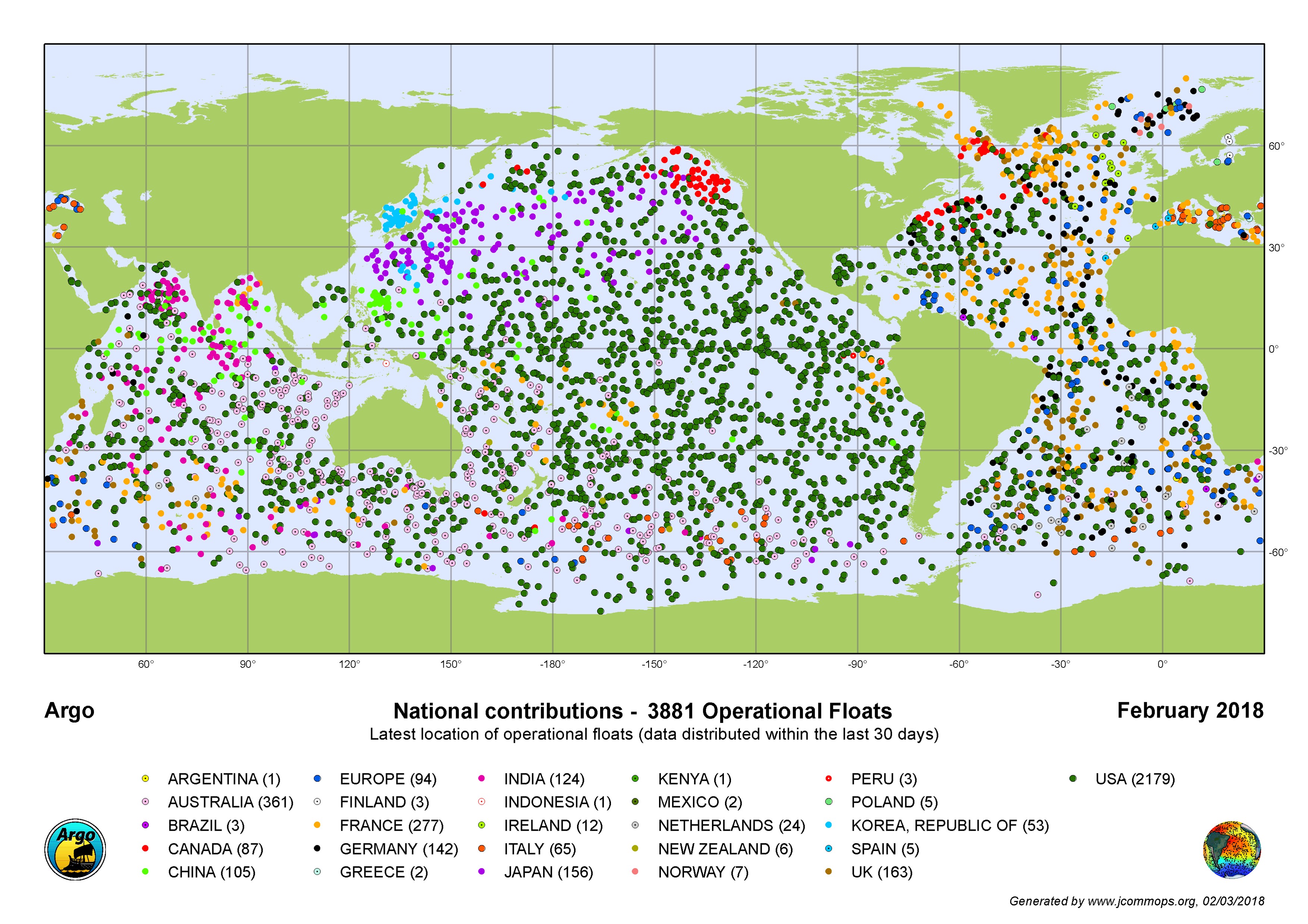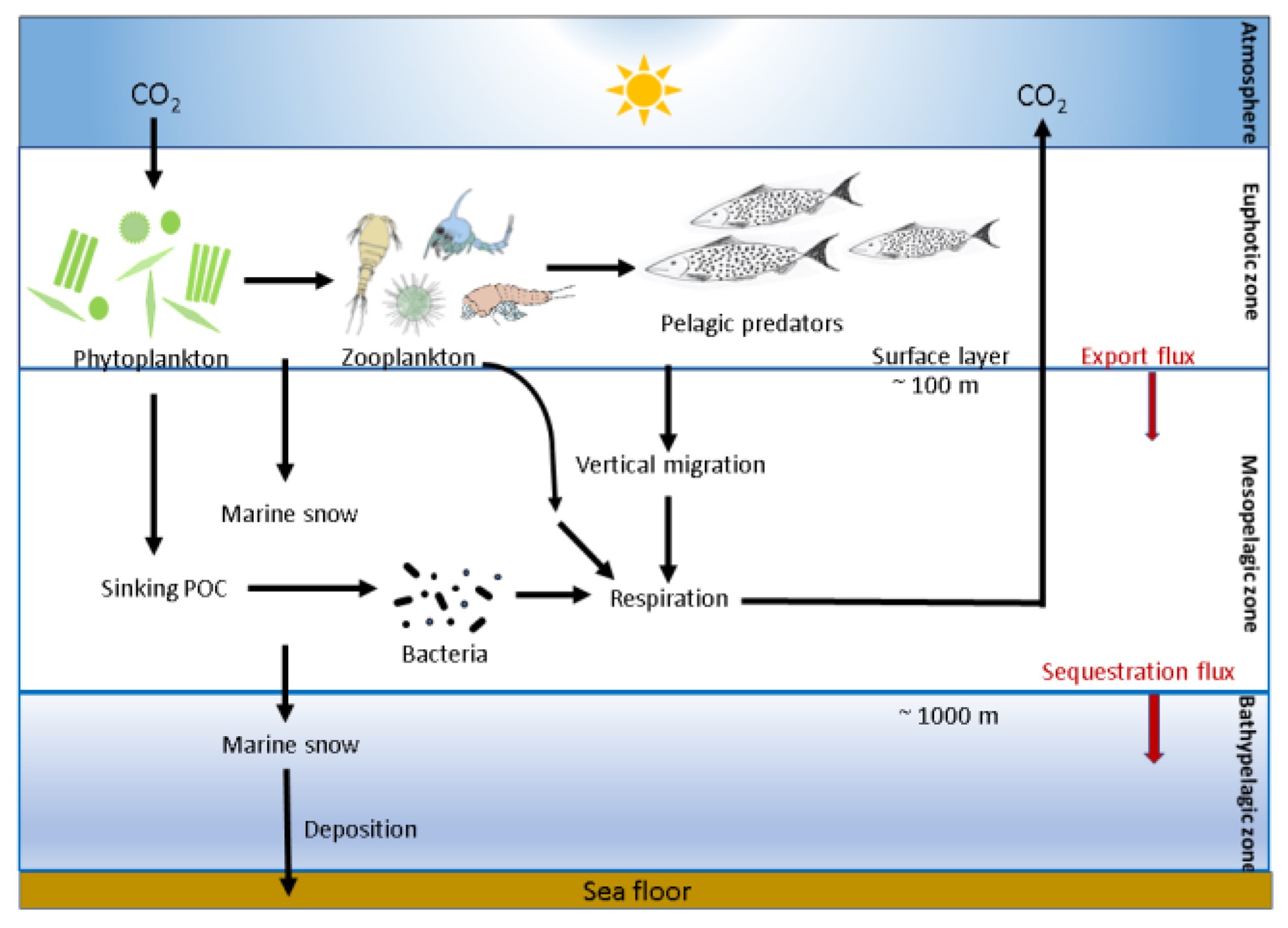
Credit: Adriana Zingone, Domenico D'Alelio, Maria Grazia Mazzocchi, Marina Montresor, Diana Sarno, LTER-MC team, CC BY-SA 4.0 < >, via Wikimedia Commons
Background
Synopsis: Every night, in bodies of water of every type, all around the world, vast numbers of aquatic animals migrate from deep waters to the surface to feed and mate. Known as the Diel Vertical Migration (DVM), we are just beginning to understand why this happens and more importantly, how this motion stores carbon.
- In the mid-1800’s, naturalists witnessed a flurry of activity of freshwater organisms like daphnia on the water’s surface at night. But during the day, the daphnia would seem to disappear. The naturalists did not have any explanation as to why this occurred, and it remained a mystery.
- Over 100 years later, during WWII, Navy operators used sonar to scan the ocean, closely watching enemy submarines. The operators noticed “false bottoms” in the ocean at night, while measuring much greater depths during the day.
- What researchers finally realized was that sonar waves were being reflected from dense layers of migrating marine organisms instead of the actual ocean floor.
- This ubiquitous phenomenon was formally named Diel Vertical Migration (DVM) ("Diel" refers to a 24-hour period), and has since been observed across the globe in diverse bodies of water, from oceans to freshwater lakes and brackish waters.
- This discovery confirmed that massive numbers of organisms were moving toward the surface at night and included not only small organisms like zooplankton but also larger animals like fish, squid, and even whales.
- Further observations and data collection provided more details about the mysterious process, which occurs primarily between two layers of the ocean’s epipelagic and mesopelagic zones.
- Epipelagic Zone (0–200 m / 0–660 ft): This “sunlight zone” is where phytoplankton perform photosynthesis, absorbing sunlight and producing oxygen, forming the basis of the marine food web, as we learned in a previous EarthDate (ED410 – Essential Algae)
- Mesopelagic Zone (200–1000 m / 660–3300 ft): Known as the “twilight zone,” this layer is darker and provides a refuge from predators for many animals during the day.
- During daylight, zooplankton and other creatures stay in the mesopelagic zone to avoid predators.
- At sunset, they ascend to the epipelagic zone to feed on phytoplankton and other surface organisms.
- Scientists believe the migration allows animals to feed in surface waters where food is plentiful, particularly on phytoplankton.
- Animals also use DVM to avoid predators, as staying in deeper, darker waters during the day offers protection from visual predators.
- Understanding what was happening was important, but researchers still had questions about how the role that light, or lack of it, in polar regions impacts this global migration.
- The depth and timing of DVM are affected by light intensity, cloud cover, and seasonal shifts in daylight. For example, during a full moon with few clouds, organisms from the mesopelagic zone did not rise as close to the surface as they would during a darker night.
- Animals were very sensitive to subtle changes in light, which signal the right time to ascend or descend as well as to what depths.
- In high-latitude regions like the Arctic and Antarctic, seasonal extremes mean extended periods of light in summer and extended periods of darkness in winter.
- Studies in these areas suggest that during long winter nights, some polar creatures may use moonlight as a cue for migration, adjusting their movements based on reflected light rather than sunlight.
- Further laboratory experiments with Antarctic krill, Euphausia superba, showed that they continue DVM patterns even in total darkness, suggesting an internal circadian rhythm.
- Krill that had been exposed to 24 hours of darkness in a lab exhibited similar migration behaviors to those in normal light-dark conditions, supporting the theory that DVM in these species is not solely light-dependent but also driven by internal biological clocks.
- Our knowledge of DVM has grown with an expanding network of technological tools including satellites, floats, and submersibles.
- Initial studies by scientists first looked at what was going on at the surface using satellite imagery that measured chlorophyll-A. This information is used to estimate phytoplankton biomass on the ocean’s surface.
- Proposed in a white paper in 2007, the Biogeochemical (BGC)–Argo program has developed into a global network of robotic floats capable of descending to depths of 2 km (1.2 miles). Sixteen countries work collaboratively to monitor the 3800 floats across the globe monitoring ocean biology, geology, and chemistry continuously.
- Compared to satellite imagery, BGC-Argo data reveals much higher levels of carbon biomass, suggesting satellites may underestimate oceanic carbon as they are only capable of measuring chlorophyll-A on the ocean’s surface.

Credit: Hjfreeland, CC BY-SA 4.0, via Wikimedia Commons - In 2019, a robotic tool named Mesobot was designed to track and observe slow-moving creatures like zooplankton and gelatinous animals in the mesopelagic twilight zone.
- Mesobot can capture high-resolution images and move autonomously along pre-programmed paths or via tether from a surface vessel.
- Developed by Stanford University, Monterey Bay Aquarium, and Woods Hole Oceanographic Institute, Mesobot allows researchers to study animals without disturbing their natural behavior.
- An important goal of the data collection from both Mesobot and the BCG-Argo network is to deepen our understanding of carbon cycling in the oceans. (see ED-36 Recycling Carbon)
- In a recent EarthDate episode, we learned about the importance of phytoplankton in producing oxygen (ED-410 Essential Algae).
- Zooplankton and other animals feed on carbon-rich phytoplankton at the surface and carry this carbon down with them as they return to the depths, effectively sequestering it in the mesopelagic zone.
- As zooplankton consume carbon-based food, they convert it into excreted waste, which sinks to the ocean floor.
- This waste, rich in carbon, forms a natural “carbon pump,” moving carbon from surface waters to deeper ocean layers where it is stored long-term.
- This process helps store carbon in the ocean for extended periods, potentially thousands of years, thus lowering atmospheric CO2 levels.
- Understanding DVM helps scientists estimate the ocean’s role in carbon storage and its impact on climate regulation.
- Researchers hope that by understanding the DVM more thoroughly, they can make better estimates of the amount of carbon that is being stored in the oceans due to DVM.
- Warming oceans could alter DVM patterns, changing light conditions and food availability, potentially disrupting carbon sequestration processes
- How will rising ocean temperatures affect DVM behaviors and carbon sequestration efficiency?
- Animals may be forced to migrate to cooler northern waters, creating new patterns of light and darkness.
- Will species be able to adapt to altered light conditions due to shifting habitats, or will these changes threaten their survival?

Phytoplankton are a key driver of the carbon cycle in the world’s oceans. Particulate organic carbon (POC) from phytoplankton and marine snow, organic detritus, fall through the ocean layers and are deposited on the sea floor.
Credit: Samarpita Basu and Katherine R. M. Mackey, CC BY-SA 4.0, via Wikimedia Commons
Episode Script
One night in the mid-1800s, a naturalist in a boat saw something mysterious. The surface water was teeming with daphnia, zooplankton more commonly known as ‘sea fleas.’
The next morning, they had disappeared. The next night, they were there again. Where did they come from? Where did they go?
For a century, this was a mystery. Then navy ships, using sonar to track submarines, found that the deep ocean bottom appeared far shallower at night – when it was moving upward!
They theorized they were getting a false reading, as the sonar bounced off swarms of sea creatures, rising in the water column.
Scientists took a trawler out at night and brought up nets full of small fish, crustaceans and jellyfish. The navy operators were right. They had discovered the DVM, the Diel Vertical Migration.
Further investigation revealed what was happening. Phytoplankton – tiny floating algae – stay near the surface during the day to collect sunlight for photosynthesis.
Small creatures that eat phytoplankton hide in deep water during the day, to avoid being eaten themselves.
Then at night, they migrate to the warmer surface to feed and mate. Large predators, even sharks and whales, follow them up. As dawn approaches, they all sink back into the deep.
It turns out this happens in every ocean, in every lake, everywhere on the planet. It’s the largest migration on Earth – and amazingly, it happens every night.

